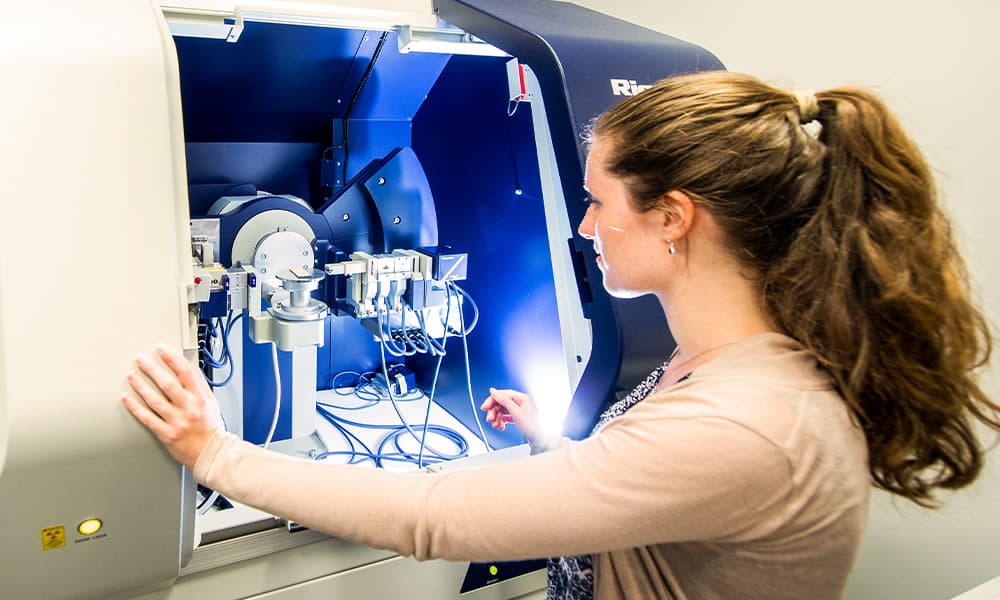Background
DNA-encoded libraries (DELs) are revolutionising drug discovery by enabling the rapid screening of billions of compounds against biological targets. Despite their transformative potential, DELs face a critical limitation: the diversity of compounds that can be synthesized is constrained by the number of chemical reactions that are compatible with DNA. On-DNA reactions must be exceptionally mild, avoiding conditions that damage the DNA barcode. This typically requires low concentrations, gentle solvents, and moderate temperatures. While several reaction classes have been successfully adapted to these conditions, many of the most powerful transformations in synthetic chemistry, in particular those that form new rings and carbon-carbon bonds, remain inaccessible.
Expanding the repertoire of on-DNA reactions is therefore a major frontier in DEL research. By inventing and adapting new synthetic transformations that preserve DNA integrity, chemists can dramatically increase the structural diversity of DELs. This, in turn, opens new chemical space and accelerates the discovery of next-generation pharmaceuticals.
Project description
A 3.5-year Faculty of Science and Technology PhD funded position is available in the Chemistry Department at Lancaster University, with October 2026 start. The project will be jointly supervised by Dr M. Paz Muñoz and Dr Jamie Docherty, whose groups bring complementary expertise in organometallic catalysis, synthetic methodology, and DNA-encoded chemistry.
This PhD project aims to expand the on-DNA chemical toolkit by harnessing gold catalysis. Gold catalysts are renowned for their ability to activate unsaturated bonds and are uniquely suited to promote complex bond-forming reactions under gentle conditions. By developing novel gold-catalysed reactions on DNA-linked substrates, the project will open new chemical space for DELs, unlocking new reaction pathways that can form multiple bonds in a single operation, thereby generating unprecedented structural motifs directly on-DNA.
The project will focus on developing a range of gold-catalysed reactions to construct nitrogen-containing ring systems. These ring systems are highly relevant to medicinal chemistry, as they often serve as privileged scaffolds in bioactive molecules. By demonstrating the feasibility and robustness of these reactions under DNA-compatible conditions, the project will open new avenues for DEL applications and enable the discovery of novel therapeutic agents.
Training and environment
This PhD project offers the opportunity to make a meaningful contribution to both fundamental chemistry and applied medicinal chemistry research. You will be at the forefront of an exciting interdisciplinary field, combining synthetic innovation with real-world impact in drug discovery. You will receive comprehensive training in:
- Synthetic organic and organometallic laboratory techniques
- Characterisation methods (NMR, MS, LCMS, UV–Vis, X-ray crystallography)
- Catalyst screening, reaction optimisation and data analysis
- DNA ligation to small-molecule substrates and on-DNA reaction workflows
- Assessing DNA integrity and concentration during reactions
You will be encouraged to develop your own ideas within the research project, design experiments, and contribute creatively to the direction of the project. You will meet formally in one-to-one weekly meetings with the supervisors and interact informally on a daily basis to discuss progress, address challenges, and refine experimental design. You will also collaborate closely with PhD students and PDRAs from both groups and present work regularly at joint group meetings, receiving feedback on presentation skills and research strategies. In addition, you will have opportunities to engage with other researchers in the synthetic laboratory and the department, and to attend departmental seminars, providing a rich, multidisciplinary environment that supports broad professional development. You will be supported to build a strong CV for careers in academia, pharma or biotech, including opportunities to present your work at external meetings and conferences where appropriate.
Requirements
Applicants will hold, or expect to receive, a 1st class or 2:1 UK Master's or BSc degree (or equivalent) in Chemistry, or related discipline and possess theoretical and practical skills commensurate with a science-based undergraduate degree programme. Candidates with a 2:2 may be considered if they can demonstrate excellent research skills in their application and references.
The successful candidate will:
- Have a strong interest and some experience in synthetic organic and/or organometallic chemistry
- Be enthusiastic about learning on-DNA chemistry and the drug-discovery process
- Enjoy practical laboratory work and problem-solving
- Be willing to learn new experimental techniques and analytical methods
- Work well as part of a collaborative research team
- Possess good written and oral communication skills
Prior experience with DNA, DELs or gold catalysis is welcome but not essential.
How to apply (Please read carefully)
Dr Muñoz and Dr Docherty welcome informal email enquiries before submitting an application (m.munoz-herranz@lancaster.ac.uk and j.docherty2@lancaster.ac.uk). Please note that we cannot receive applications by email as they must be processed centrally.
Applications should be made via Lancaster University’s online application system
Please indicate on your application that you are applying for this funded PhD project by declaring the title of the advertisement where prompted. You may use the project description as your research proposal to apply for this studentship.
Funding Details
The studentship will cover fees at the UK rate plus the standard maintenance stipend.
It may also fully or partially contribute to the fees and stipend of a self-funded international candidate, though it is advised that you enquire regarding this before applying.
Deadline: Friday 23rd January 2026. Shortlisted candidates will be interviewed in early-mid February.



